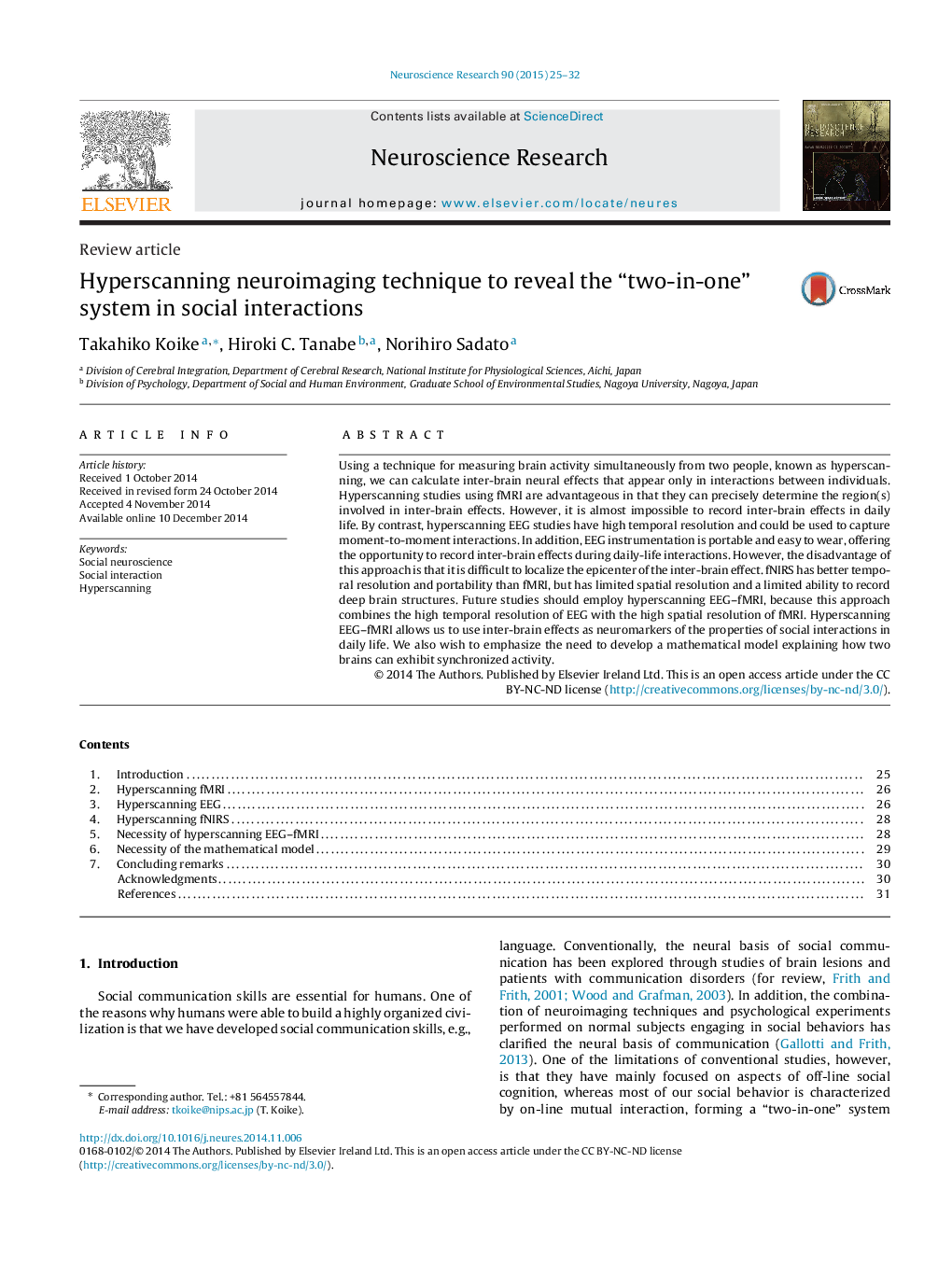| Article ID | Journal | Published Year | Pages | File Type |
|---|---|---|---|---|
| 6286163 | Neuroscience Research | 2015 | 8 Pages |
â¢Hyperscanning is a technique for recording brain simultaneously from two people.â¢This paper reviews recent hyperscanning neuroimaging studies.â¢The future study should employ hyperscanning EEG-fMRI.â¢The model study could reveal how two brains can exhibit synchronized activity.
Using a technique for measuring brain activity simultaneously from two people, known as hyperscanning, we can calculate inter-brain neural effects that appear only in interactions between individuals. Hyperscanning studies using fMRI are advantageous in that they can precisely determine the region(s) involved in inter-brain effects. However, it is almost impossible to record inter-brain effects in daily life. By contrast, hyperscanning EEG studies have high temporal resolution and could be used to capture moment-to-moment interactions. In addition, EEG instrumentation is portable and easy to wear, offering the opportunity to record inter-brain effects during daily-life interactions. However, the disadvantage of this approach is that it is difficult to localize the epicenter of the inter-brain effect. fNIRS has better temporal resolution and portability than fMRI, but has limited spatial resolution and a limited ability to record deep brain structures. Future studies should employ hyperscanning EEG-fMRI, because this approach combines the high temporal resolution of EEG with the high spatial resolution of fMRI. Hyperscanning EEG-fMRI allows us to use inter-brain effects as neuromarkers of the properties of social interactions in daily life. We also wish to emphasize the need to develop a mathematical model explaining how two brains can exhibit synchronized activity.
